Protect PDF with UPDF on Windows
Using encryption, password protection, or redaction on your PDF files has the utmost importance due to privacy concerns. UPDF now allows Windows users to protect their PDFs with a password or redaction using the UPDF program. Read on to learn how to protect PDFs using UPDF. Or, you can also watch the video guide below.
If you want to know how to protect your PDFs by adding watermarks, read this guide.
Windows • macOS • iOS • Android 100% secure
- 1. Add an Open Password and Permission Password
- 2. Remove Security
- 3. Redact Content
- 4. Sanitize PDF
1. Add an Open Password and Permission Password
The first encryption features that UPDF offers is to add an open password to your PDF file. Here is how to do it:
- Open your PDF file in UPDF.
- Now, extend the menu for the Save icon and choose the Protect Using Password option from the menu.
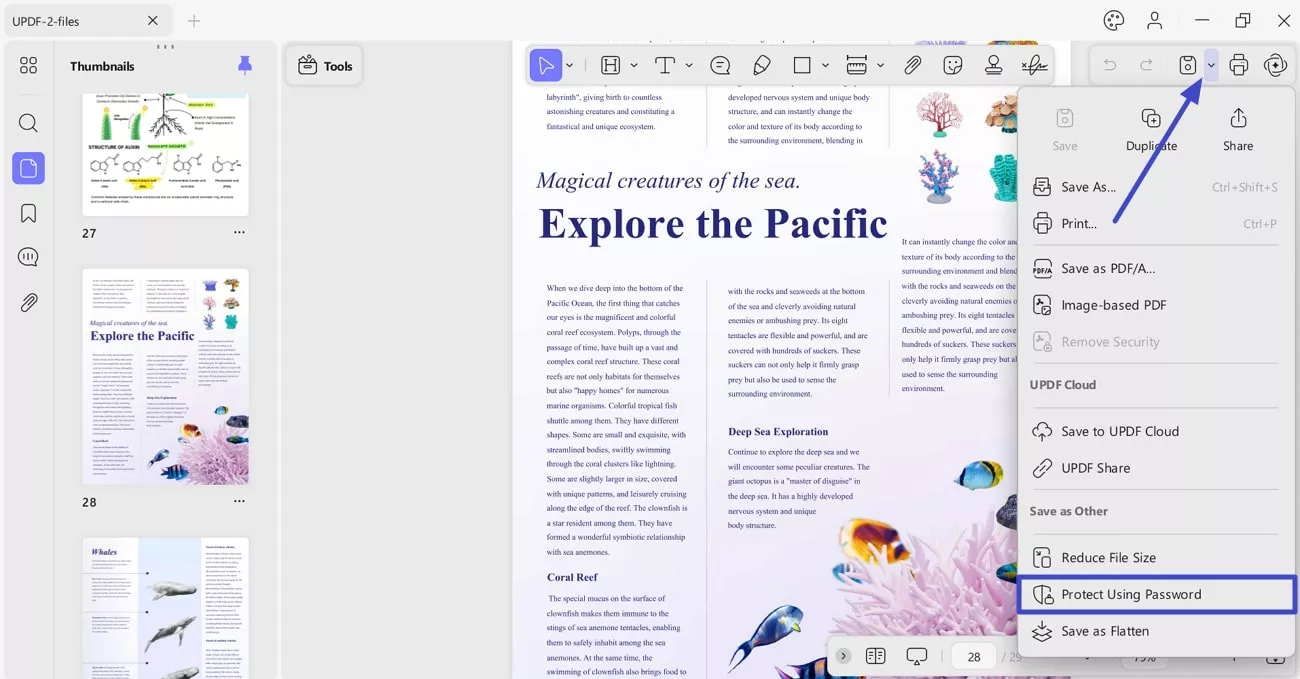
Following this, a window will appear on your screen, allowing you to add Document Open Password and the Permission Password.
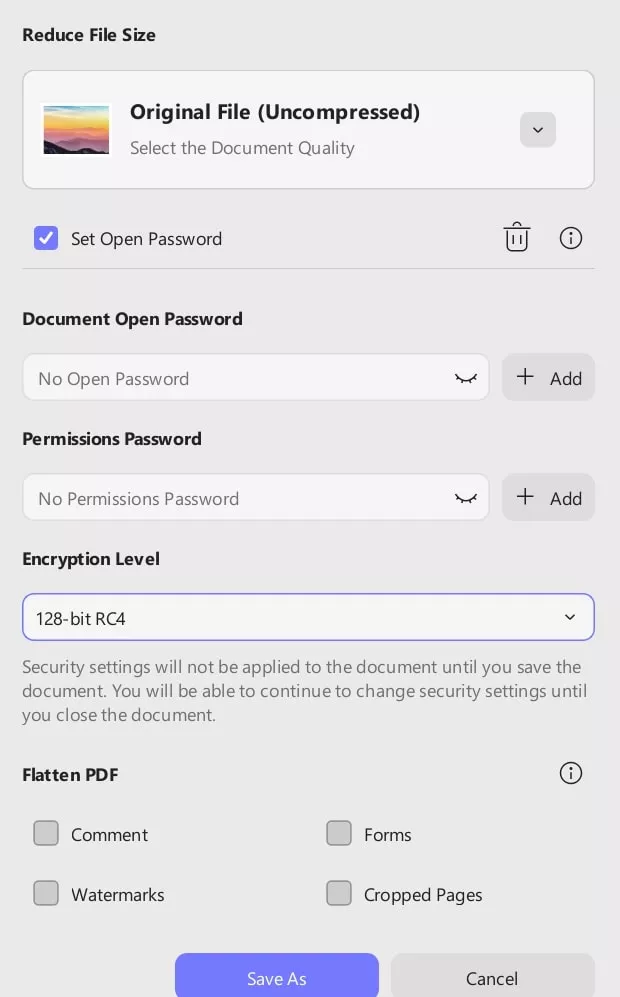
- Document Open Password: Upon pressing the Add button, a new window appears on your screen, allowing you to add and confirm password. Once done, press the Save As button to successfully add a PDF open password.
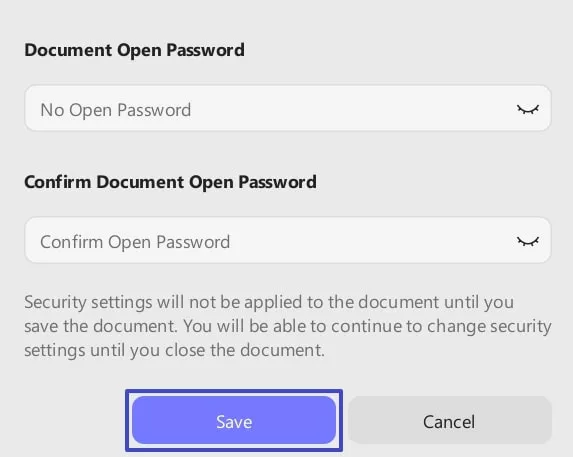
- Permission Password: After adding the open document password, you’ll be navigated back to the same window. Now, you can add Permission Password by pressing the Add button, revealing another window on your screen. Next, add a permission password, and then confirm the permission password. Besides this, you can see more options like printing and changing permissions. You can also tick the option for Enable Copying of Text, Images, and Other Content. Finally, press the Save button to secure all the changes made.
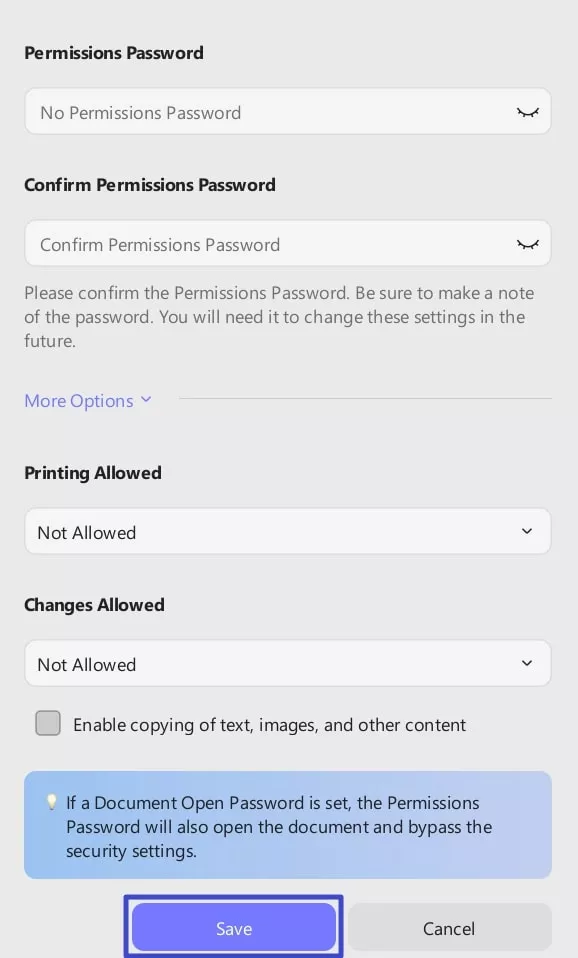
Once both passwords are set, you can also change the level of protection by accessing the Encryption Level menu. The security levels include: 128-bit RC4, 128-bit AES, and 256-bit RC4.
Now, press the Save As button to save the encrypted file with an open password and a permission password.
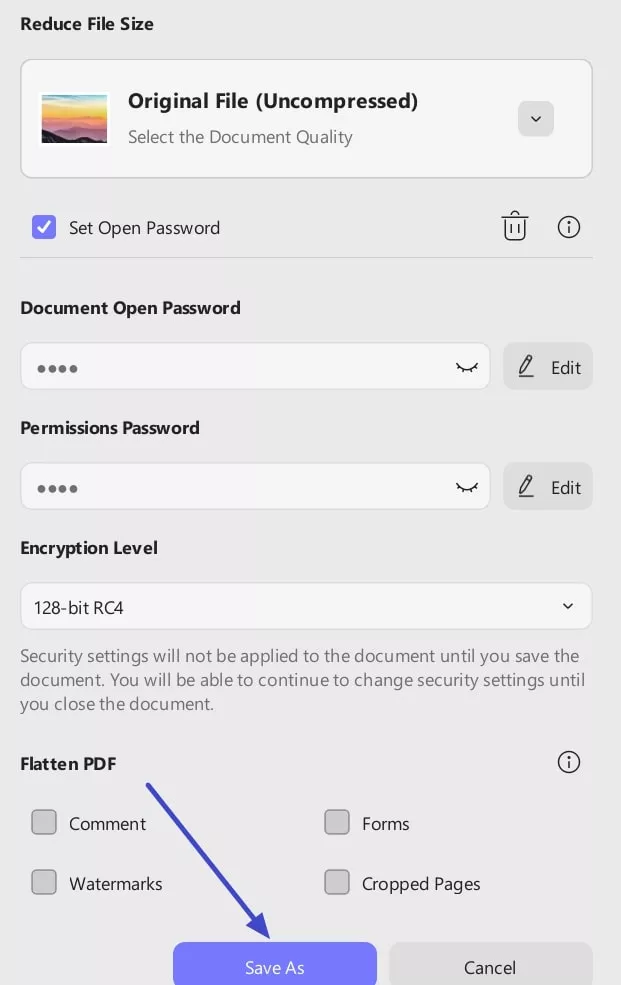
2. Remove Security
UPDF also provides the option to remove the protection from an existing PDF file.
- To do so, access the menu for Save and choose the Remove Security option from the list. If your document hasn't been protected in any way, this option won't be accessible.
- Now, a window for Save As will be revealed, asking you enter the password to unlock and to save a copy of your PDF with removed security.
- Simply, press the Save button to remove the security passwords from your existing PDF file successfully.
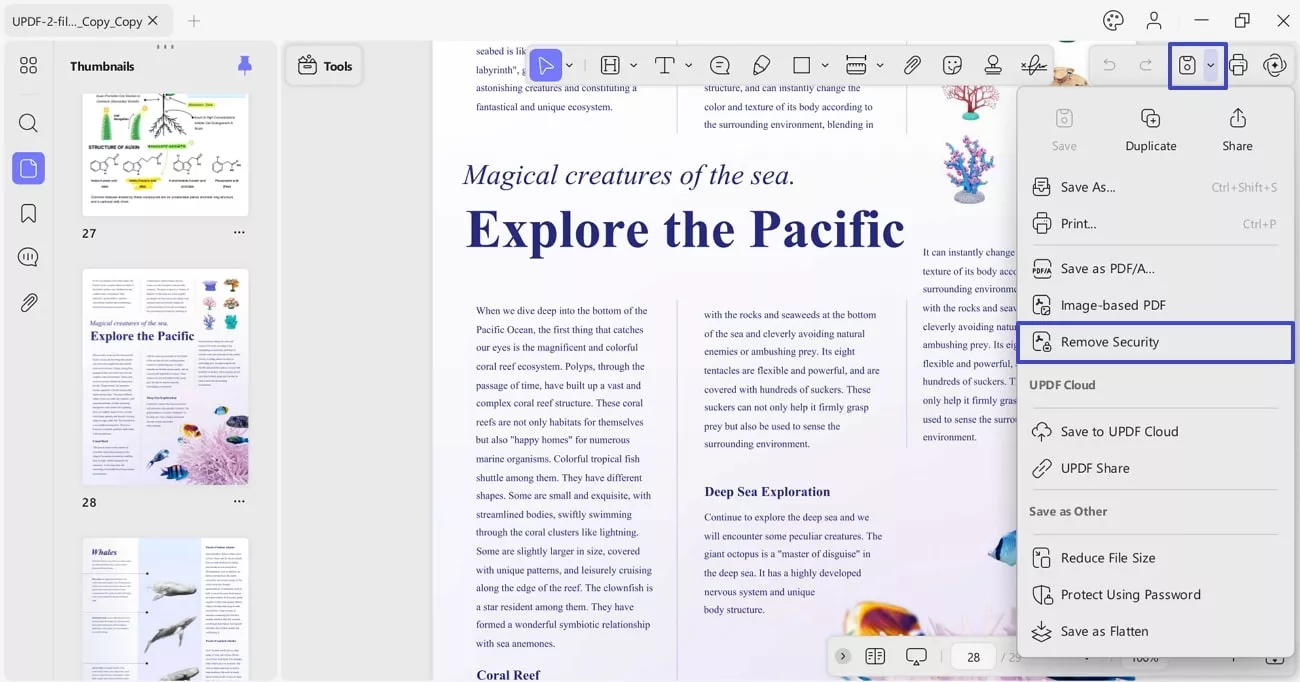
3. Redact Content
UPDF provides various options for effortless PDF redaction. Before you start redaction, you’ll need to access the Tools option from the left side of your screen. This will provide an extended menu, from which you can select the Redact option.
- By doing this, a window will appear on your screen explaining to you that redaction will permanently remove sensitive content from your document. Now, press the OK button to acknowledge and begin redaction.
- Along with this, a panel for properties will appear, providing you with options like Redacted Area Fill Color, Overlay Text, Content, and Redaction Mark Appearance ( including stroke color, fill color, and opacity settings).
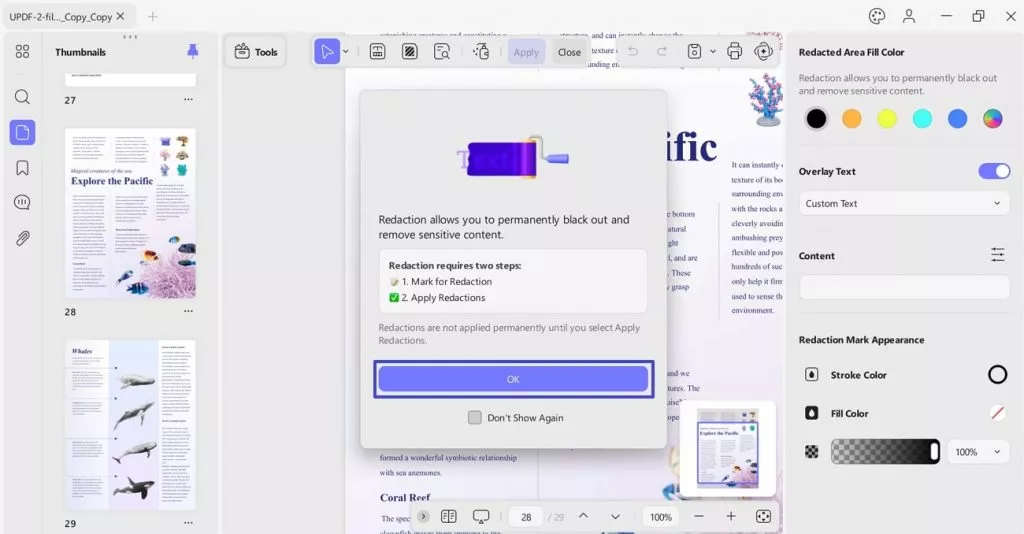
1. Redact Text
- Now, select the icon for Redact Text from the top appearing toolbar.
- With the help of cursor, start highlighting the text you want to redact.
- Once done, press the Apply button to redact the selected text.
- You can change the color for redaction, add a note, or delete current action from the floating bar.
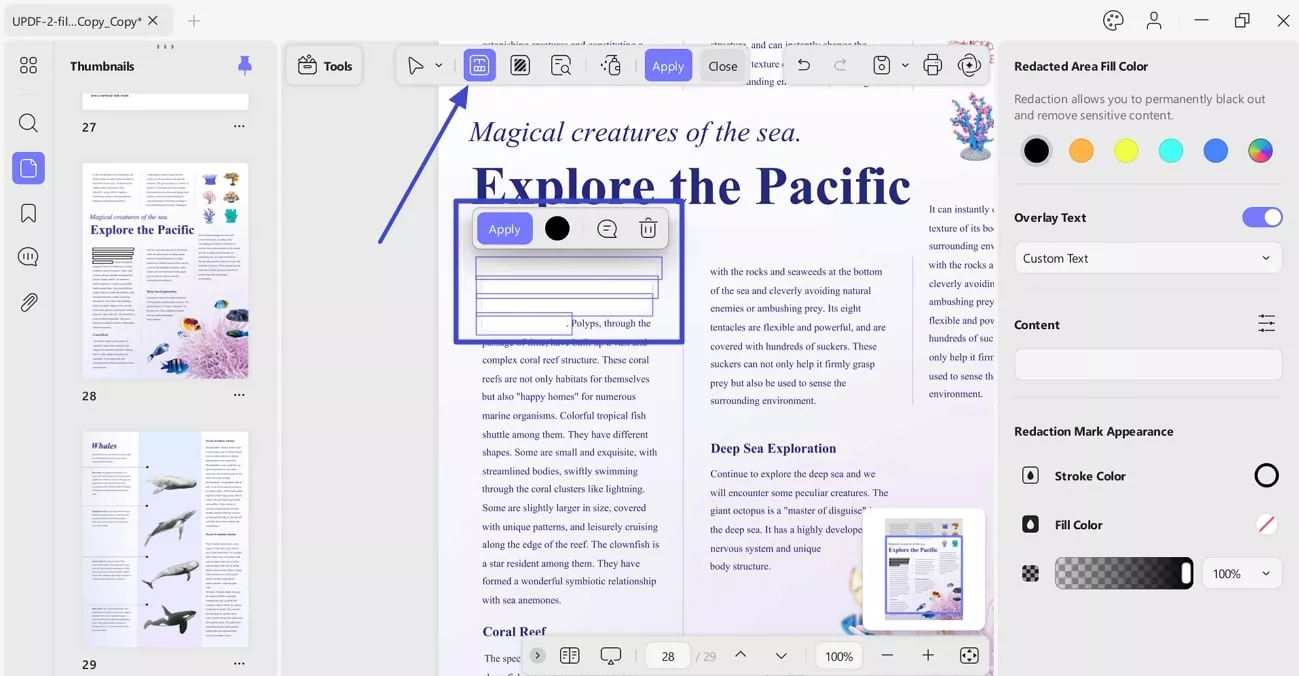
- After pressing the Apply button, you’ll be prompted with a window. Click the Continue button to redact the selected content from your document permanently.
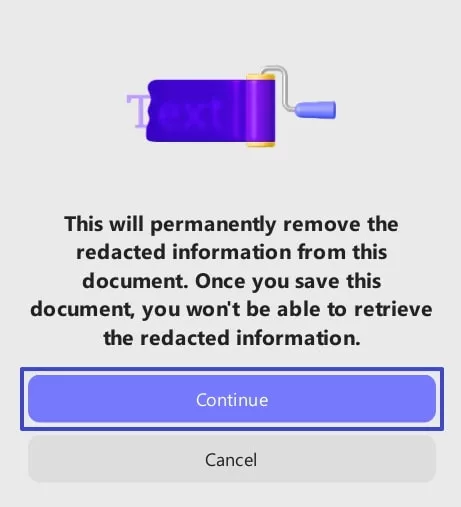
2. Redact Pages
You can also redact multiple pages at once. Select the Redact Pages option from the top toolbar and set the Page Range accordingly.
- You can extend the menu for All pages and choose between All Pages, Even and Odd Pages to redact.
- After choosing the redacted area fill color, press the Redact button to remove or redact the selected pages from the PDF successfully.
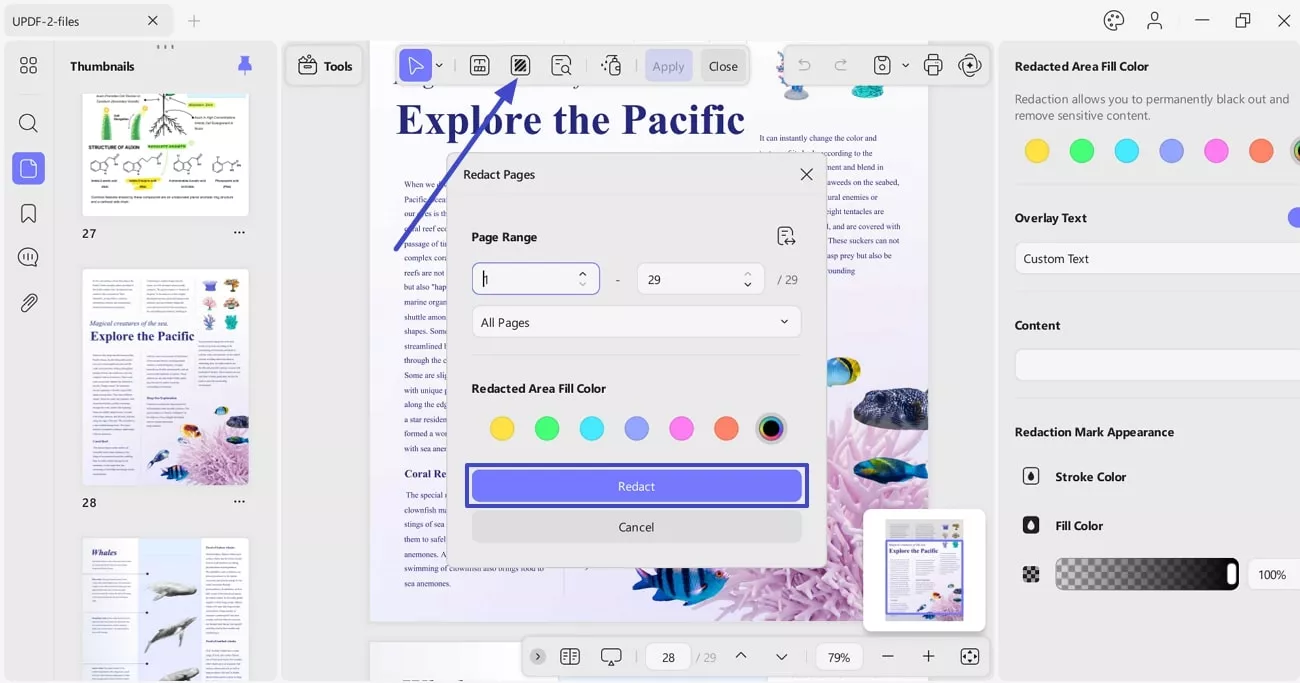
3. Find Text and Redact
There can be times when you may have to redact specific words or phrases on a document only. So, besides reading through the text and then redacting every time that particular word comes across, try the Search and Redact feature. Simply hit the Redact Search icon from the top toolbar to operate. A small side window will pop up; you can enter the keyword to mark it for redaction, and later, you can apply redaction. Besides this, it allows you to redact that specific keyword with options like Select All or concerning pages.
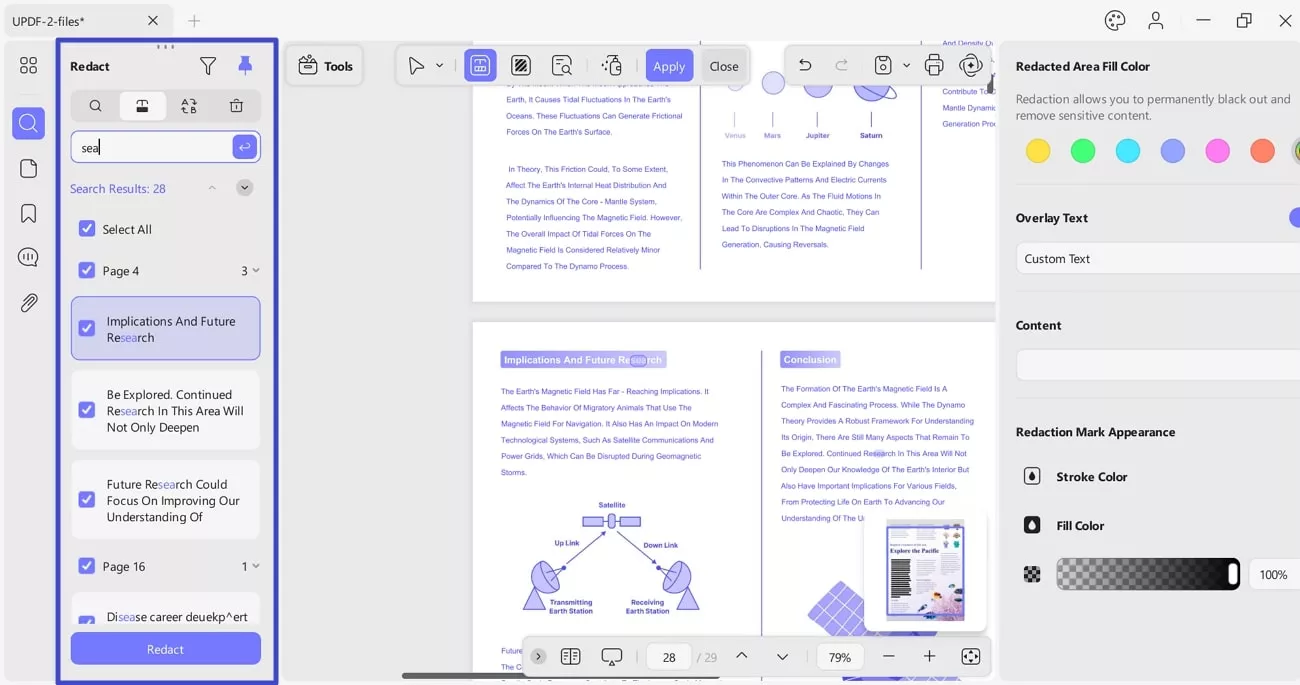
4. Sanitize PDF
The Sanitize PDF feature by UPDF allows users to remove all the hidden data and metadata from their documents. This means sensitive information is not passed along when you publish the PDF.
- To use this, you need to press the Sanitize PDF icon from the top toolbar.
- In the new window, read the list for things that will be remove and then click on the OK button to continue.
- Following this, you’ll be allowed to save your PDF with sensitive information removed.
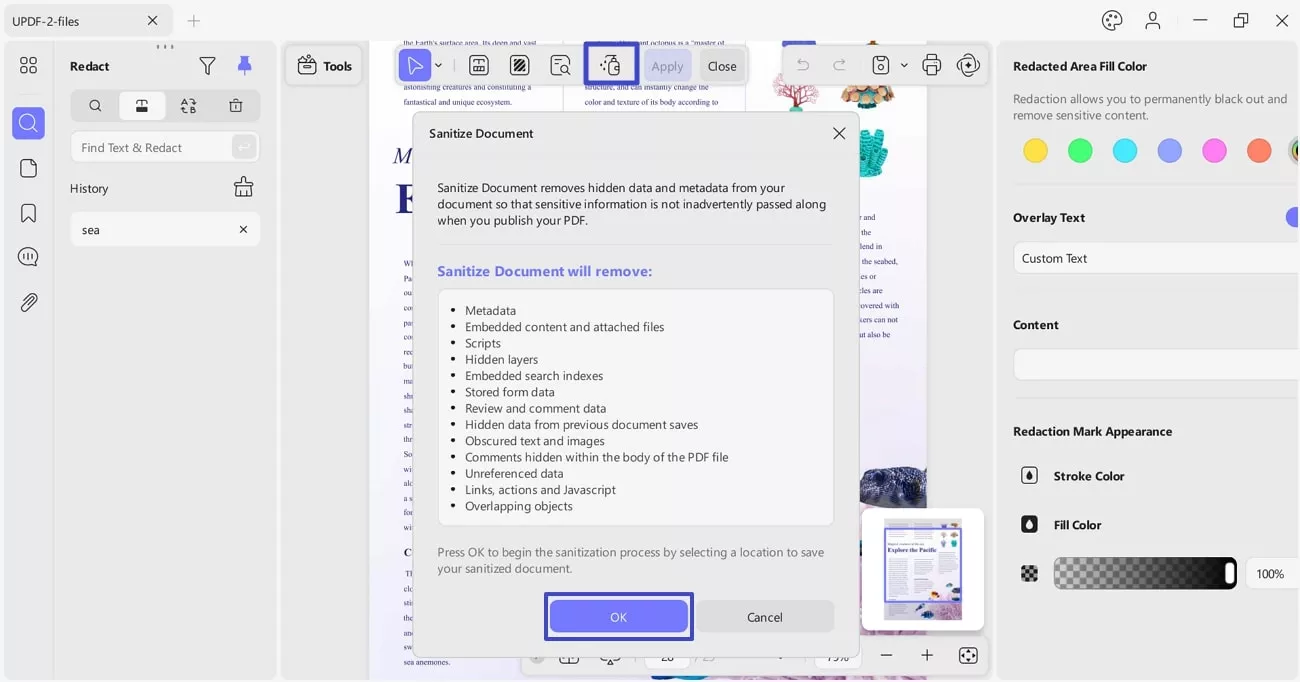
 UPDF
UPDF
 UPDF for Windows
UPDF for Windows UPDF for Mac
UPDF for Mac UPDF for iPhone/iPad
UPDF for iPhone/iPad UPDF for Android
UPDF for Android UPDF AI Online
UPDF AI Online UPDF Sign
UPDF Sign Edit PDF
Edit PDF Annotate PDF
Annotate PDF Create PDF
Create PDF PDF Form
PDF Form Edit links
Edit links Convert PDF
Convert PDF OCR
OCR PDF to Word
PDF to Word PDF to Image
PDF to Image PDF to Excel
PDF to Excel Organize PDF
Organize PDF Merge PDF
Merge PDF Split PDF
Split PDF Crop PDF
Crop PDF Rotate PDF
Rotate PDF Protect PDF
Protect PDF Sign PDF
Sign PDF Redact PDF
Redact PDF Sanitize PDF
Sanitize PDF Remove Security
Remove Security Read PDF
Read PDF UPDF Cloud
UPDF Cloud Compress PDF
Compress PDF Print PDF
Print PDF Batch Process
Batch Process About UPDF AI
About UPDF AI UPDF AI Solutions
UPDF AI Solutions AI User Guide
AI User Guide FAQ about UPDF AI
FAQ about UPDF AI Summarize PDF
Summarize PDF Translate PDF
Translate PDF Chat with PDF
Chat with PDF Chat with AI
Chat with AI Chat with image
Chat with image PDF to Mind Map
PDF to Mind Map Explain PDF
Explain PDF Scholar Research
Scholar Research Paper Search
Paper Search AI Proofreader
AI Proofreader AI Writer
AI Writer AI Homework Helper
AI Homework Helper AI Quiz Generator
AI Quiz Generator AI Math Solver
AI Math Solver PDF to Word
PDF to Word PDF to Excel
PDF to Excel PDF to PowerPoint
PDF to PowerPoint User Guide
User Guide UPDF Tricks
UPDF Tricks FAQs
FAQs UPDF Reviews
UPDF Reviews Download Center
Download Center Blog
Blog Newsroom
Newsroom Tech Spec
Tech Spec Updates
Updates UPDF vs. Adobe Acrobat
UPDF vs. Adobe Acrobat UPDF vs. Foxit
UPDF vs. Foxit UPDF vs. PDF Expert
UPDF vs. PDF Expert